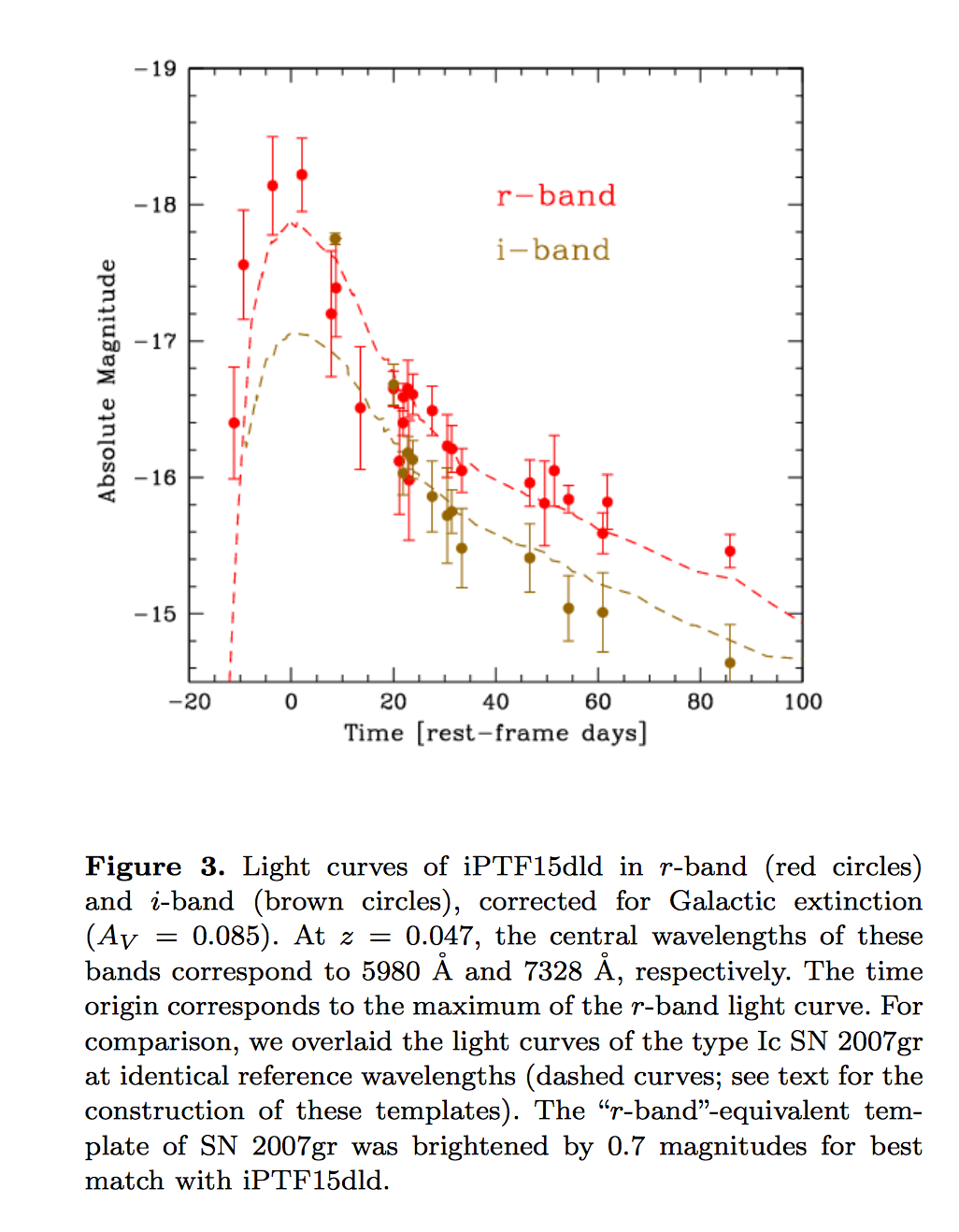Padova-Asiago Supernova Group
Highlights
Optical photometry and spectroscopy of the low-luminosity, broad-lined Ic supernova iPTF15dld
Pian, E. et al. 2017, MNRAS 466, 1848 (link to pdf)
Core-collapse stripped-envelope supernova (SN) explosions reflect the diversity of physical parameters and evolutionary paths of their massive star progenitors. We have observed the type Ic SN iPTF15dld (z = 0.047), reported by the Palomar Transient Factory. Spectra were taken starting 20 rest-frame days after maximum luminosity and are affected by a young stellar population background. Broad spectral absorption lines associated with the SN are detected over the continuum, similar to those measured for broad-lined, highly energetic SNe Ic. The light curve and maximum luminosity are instead more similar to those of low luminosity, narrow-lined Ic SNe. This suggests a behavior whereby certain highly-stripped-envelope SNe do not produce a large amount of Ni56, but the explosion is sufficiently energetic that a large fraction of the ejecta is accelerated to higher-than-usual velocities. We estimate SN iPTF15dld had a main sequence progenitor of 20-25 Msun, produced a Ni56 mass of ~0.1-0.2 Msun, had an ejecta mass of [2-10] Msun, and a kinetic energy of [1-18] e51 erg. 82
Pian, E. et al. 2017, MNRAS 466, 1848 (link to pdf)
Core-collapse stripped-envelope supernova (SN) explosions reflect the diversity of physical parameters and evolutionary paths of their massive star progenitors. We have observed the type Ic SN iPTF15dld (z = 0.047), reported by the Palomar Transient Factory. Spectra were taken starting 20 rest-frame days after maximum luminosity and are affected by a young stellar population background. Broad spectral absorption lines associated with the SN are detected over the continuum, similar to those measured for broad-lined, highly energetic SNe Ic. The light curve and maximum luminosity are instead more similar to those of low luminosity, narrow-lined Ic SNe. This suggests a behavior whereby certain highly-stripped-envelope SNe do not produce a large amount of Ni56, but the explosion is sufficiently energetic that a large fraction of the ejecta is accelerated to higher-than-usual velocities. We estimate SN iPTF15dld had a main sequence progenitor of 20-25 Msun, produced a Ni56 mass of ~0.1-0.2 Msun, had an ejecta mass of [2-10] Msun, and a kinetic energy of [1-18] e51 erg. 82
